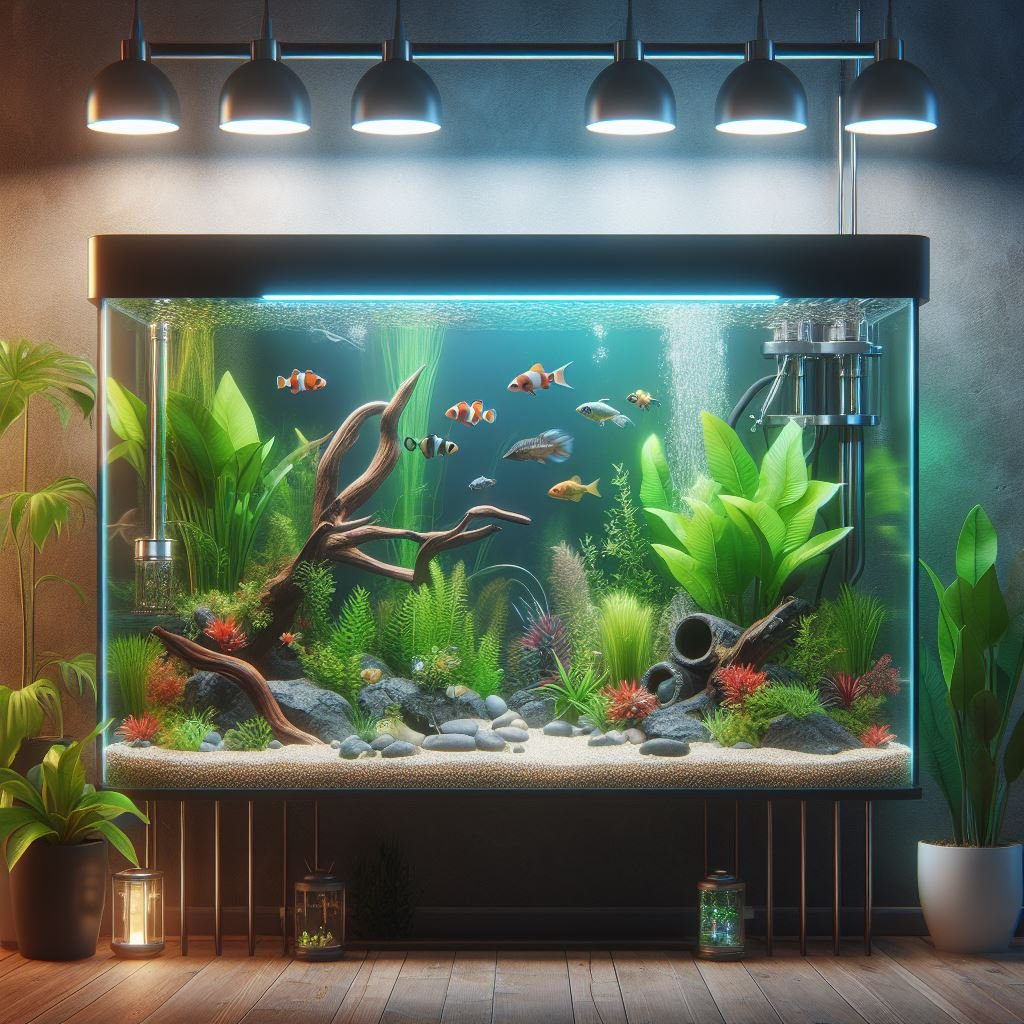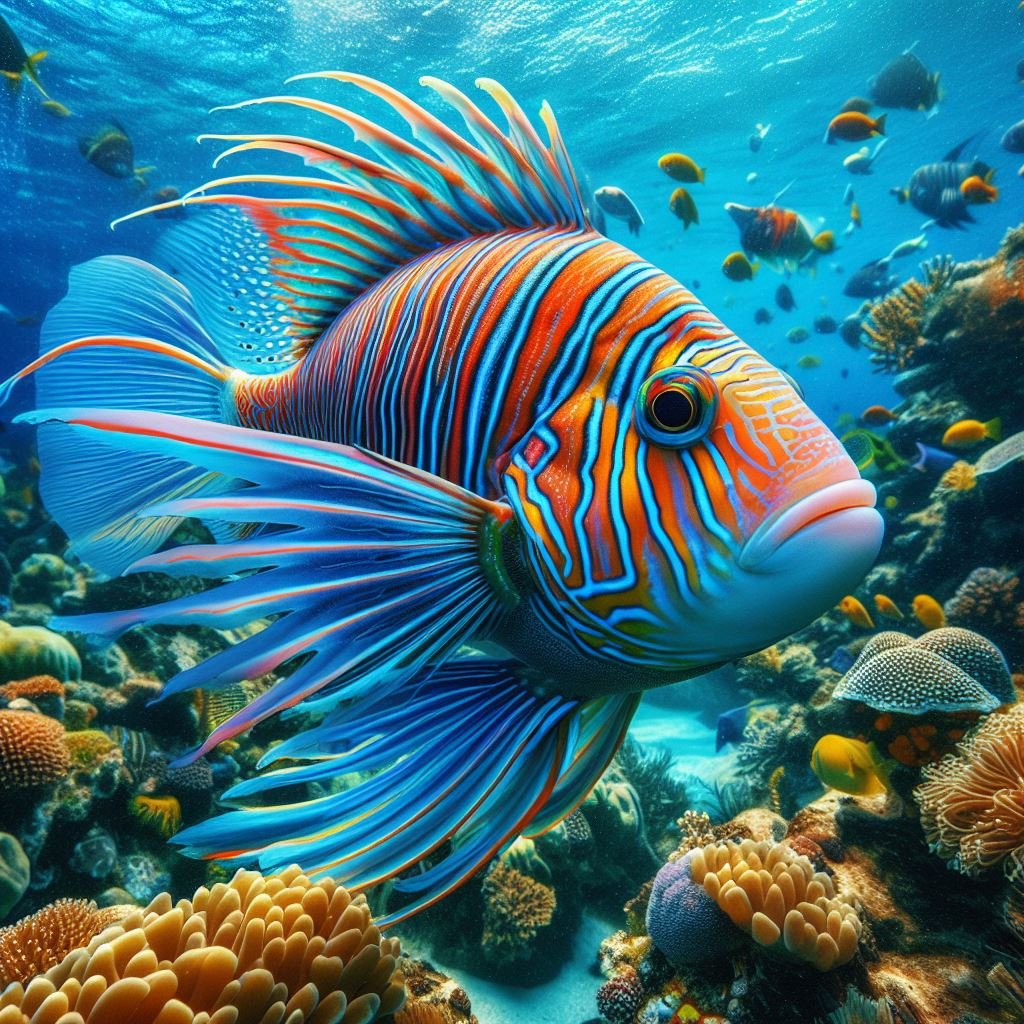Aquariums are more than just glass tanks filled with water and fish. They are living ecosystems that can provide hours of entertainment, relaxation, and education for their owners. Aquariums can also be a source of pride and joy, as they showcase the beauty and diversity of aquatic life.
However, creating and maintaining a beautiful underwater environment for your fish is not as easy as it may seem. It requires careful planning, research, and dedication. You need to consider many factors, such as the size and shape of your tank, the type and number of fish you want to keep, the water quality and temperature, the filtration and lighting systems, the substrate and decorations, and the feeding and cleaning routines.
In this article, we will guide you through the basics of aquarium keeping, and give you some tips and tricks on how to create and maintain a beautiful underwater environment for your fish.
Choosing Your Tank

The first step in setting up an aquarium is choosing the right tank for your needs. The tank is the foundation of your aquarium, and it will determine many aspects of your aquarium keeping, such as the space available, the cost, the maintenance, and the compatibility of fish and plants.
There are many types and sizes of tanks available in the market, ranging from small bowls and nano tanks to large aquariums and custom-built setups. The size of your tank will depend on your budget, your available space, and your personal preference. However, as a general rule, bigger is better. Bigger tanks offer more stability, more room for fish and plants, and more options for aquascaping. They also require less frequent water changes and are more forgiving of mistakes.
The shape of your tank is also important, as it affects the surface area, the depth, and the viewing angle of your aquarium. The most common shapes are rectangular, hexagonal, and bow-front. Rectangular tanks are the most versatile and economical, as they offer the most surface area and the easiest access for maintenance. Hexagonal and bow-front tanks are more aesthetically pleasing, as they create a more natural and curved look. However, they also have less surface area and more depth, which can make them harder to clean and light.
The material of your tank is another factor to consider, as it affects the durability, the weight, and the clarity of your aquarium. The most common materials are glass and acrylic. Glass tanks are more resistant to scratches and algae growth, and they offer a clearer view of your fish and plants. However, they are also heavier and more fragile, and they can crack or shatter if dropped or hit. Acrylic tanks are lighter and stronger, and they can be molded into different shapes and sizes. However, they are also more prone to scratches and yellowing, and they can warp or bend over time.
Choosing Your Fish

The next step in setting up an aquarium is choosing the right fish for your tank. The fish are the main attraction of your aquarium, and they will provide you with endless hours of enjoyment and fascination. However, not all fish are suitable for all tanks, and you need to do some research before buying any fish.
The first thing you need to consider is the compatibility of fish. Different fish have different requirements, behaviors, and personalities, and they may not get along well with each other. You need to choose fish that have similar water parameters, such as pH, hardness, and temperature, and that have compatible temperaments, such as peaceful, semi-aggressive, or aggressive. You also need to consider the size and number of fish, and make sure that your tank can accommodate them comfortably. A good rule of thumb is to have one inch of fish per gallon of water, but this may vary depending on the shape and filtration of your tank.
The second thing you need to consider is the diversity of fish. You want to create a balanced and harmonious community of fish, that will complement each other and create interest and contrast in your aquarium. You can achieve this by choosing fish from different levels of the water column, such as top, middle, and bottom dwellers, and from different regions of the world, such as tropical, temperate, or cold water. You can also choose fish from different groups, such as livebearers, tetras, barbs, cichlids, catfish, loaches, and so on.
The third thing you need to consider is the beauty of fish. You want to choose fish that will enhance the appearance and appeal of your aquarium, and that will match your personal taste and style. You can choose fish based on their color, shape, pattern, or finnage, and create a stunning display of aquatic art. You can also choose fish based on their behavior, such as schooling, shoaling, or solitary, and create a dynamic and lively scene of fish movement.
Some examples of popular and beginner-friendly fish for aquariums are:
- Guppies: These are small, colorful, and easy to breed livebearers that come in a variety of shapes and patterns. They are peaceful and active, and they can be kept in groups of at least six. They prefer warm, slightly hard, and slightly alkaline water, and they can eat a variety of foods, such as flakes, pellets, and live or frozen foods.
- Neon Tetras: These are small, bright, and schooling fish that have a distinctive blue and red stripe along their body. They are peaceful and shy, and they can be kept in groups of at least 10. They prefer soft, acidic, and slightly warm water, and they can eat flakes, pellets, and live or frozen foods.
- Corydoras Catfish: These are small, bottom-dwelling, and scavenging fish that have a flattened body and whisker-like barbels. They are peaceful and social, and they can be kept in groups of at least six. They prefer soft, neutral, and slightly warm water, and they can eat sinking pellets, algae wafers, and live or frozen foods.
- Angelfish: These are large, elegant, and semi-aggressive fish that have a tall and triangular body and long and flowing fins. They are territorial and dominant, and they can be kept in pairs or small groups. They prefer warm, slightly acidic, and slightly soft water, and they can eat flakes, pellets, and live or frozen foods.
- Betta Fish: These are small, colorful, and aggressive fish that have a slender body and long and flowing fins. They are solitary and territorial, and they can be kept alone or with peaceful and small fish. They prefer warm, slightly acidic, and slightly soft water, and they can eat flakes, pellets, and live or frozen foods.
Choosing Your Plants

The third step in setting up an aquarium is choosing the right plants for your tank. The plants are the natural and essential part of your aquarium, and they will provide many benefits for your fish and your tank. Plants can help oxygenate the water, absorb excess nutrients, prevent algae growth, provide shelter and hiding places, and create a natural and beautiful scenery.
However, not all plants are suitable for all tanks, and you need to do some research before buying any plants.
The first thing you need to consider is the compatibility of plants. Different plants have different requirements, such as light, CO2, nutrients, and substrate, and they may not thrive well in your tank. You need to choose plants that have similar water parameters as your fish, and that have compatible needs as your tank. You also need to consider the size and growth rate of plants, and make sure that your tank can accommodate them without overcrowding or overshadowing.
The second thing you need to consider is the diversity of plants. You want to create a balanced and harmonious community of plants, that will complement each other and create interest and contrast in your aquarium. You can achieve this by choosing plants from different categories, such as foreground, midground, and background plants, and from different types, such as stem plants, rosette plants, rhizome plants, floating plants, and mosses. You can also choose plants based on their color, shape, texture, or pattern, and create a stunning display of aquatic flora.
The third thing you need to consider is the beauty of plants. You want to choose plants that will enhance the appearance and appeal of your aquarium, and that will match your personal taste and style. You can choose plants based on their aesthetic value, such as their form, symmetry, or proportion, and create a pleasing and artistic arrangement of plants. You can also choose plants based on their function, such as their role in creating depth, perspective, or focal points, and create a realistic and naturalistic layout of plants.
Some examples of popular and beginner-friendly plants for aquariums are:
- Java Fern: This is a rhizome plant that has long and narrow leaves that grow from a horizontal stem. It is easy to grow and care for, as it does not need much light, CO2, or nutrients, and it can be attached to rocks, driftwood, or ornaments. It is a good background or midground plant, and it can provide shelter and hiding places for fish.
- Anubias: This is another rhizome plant that has broad and thick leaves that grow from a horizontal stem. It is also easy to grow and care for, as it does not need much light, CO2, or nutrients, and it can be attached to rocks, driftwood, or ornaments. It is a good foreground or midground plant, and it can provide shelter and hiding places for fish.
- Amazon Sword: This is a rosette plant that has long and sword-shaped leaves that grow from a central crown. It is a fast-growing and hardy plant, that can tolerate a wide range of water parameters, but it does need moderate to high light, CO2, and nutrients, and it can be planted in the substrate. It is a good background or midground plant, and it can create a lush and green backdrop for your aquarium.
- Java Moss: This is a moss plant that has tiny and feathery leaves that grow on thin and branching stems. It is very easy to grow and care for, as it does not need any light, CO2, or nutrients, and it can be attached to rocks, driftwood, or ornaments, or left floating. It is a good foreground or floating plant, and it can provide shelter and hiding places for fish, especially fry and shrimp.
- Water Wisteria: This is a stem plant that has long and broad leaves that grow along a vertical stem. It is a fast-growing and adaptable plant, that can tolerate a wide range of water parameters, but it does need moderate to high light, CO2, and nutrients, and it can be planted in the substrate or left floating. It is a good background or floating plant, and it can create a dense and bushy cover for your aquarium.
Choosing Your Equipment

- The fourth step in setting up an aquarium is choosing the right equipment for your tank. The equipment is the essential and functional part of your aquarium, and it will provide the necessary conditions and support for your fish and your plants. Equipment can include filters, heaters, lights, air pumps, thermometers, test kits, and so on.
- However, not all equipment are suitable for all tanks, and you need to do some research before buying any equipment.
- The first thing you need to consider is the compatibility of equipment. Different equipment have different specifications, such as size, capacity, power, and performance, and they may not work well in your tank. You need to choose equipment that have compatible features as your tank, and that have adequate ratings and reviews from other users. You also need to consider the installation and maintenance of equipment, and make sure that your tank can accommodate them without compromising the space, the aesthetics, or the safety of your aquarium.
- The second thing you need to consider is the diversity of equipment. You want to create a balanced and efficient system of equipment, that will work together and provide the optimal conditions and support for your aquarium. You can achieve this by choosing equipment from different categories, such as mechanical, biological, and chemical filtration, heating and cooling, lighting and CO2, and so on. You can also choose equipment based on their function, such as water movement, water quality, water temperature, plant growth, and so on.
- The third thing you need to consider is the quality of equipment. You want to choose equipment that will last long and perform well in your aquarium, and that will match your budget and your expectations. You can choose equipment based on their brand, warranty, customer service, or reputation, and avoid cheap and unreliable equipment that may break down or malfunction in your aquarium.
Some examples of popular and beginner-friendly equipment for aquariums are:
- Hang-on-back Filter: This is a type of filter that hangs on the back of your tank and draws water through a tube and into a box that contains various media, such as sponge, carbon, and bio-balls. It is easy to install and maintain, as it does not need any plumbing or drilling, and it can be cleaned and replaced easily. It is a good filter for small to medium tanks, and it can provide mechanical, biological, and chemical filtration for your aquarium.
- Submersible Heater: This is a type of heater that submerges in your tank and heats the water through a heating element and a thermostat. It is easy to use and adjust, as it does not need any wiring or external control, and it can be set to the desired temperature. It is a good heater for small to large tanks, and it can provide a stable and consistent temperature for your aquarium.
- LED Light: This is a type of light that uses light-emitting diodes (LEDs) to produce light of various colors and intensities. It is energy-efficient and long-lasting, as it does not consume much electricity or generate much heat, and it can last for years. It is a good light for small to large tanks, and it can provide a bright and natural light for your aquarium, and support the growth of plants and algae.



One thought on “How to Create and Maintain a Beautiful Underwater Environment for Your Fish”